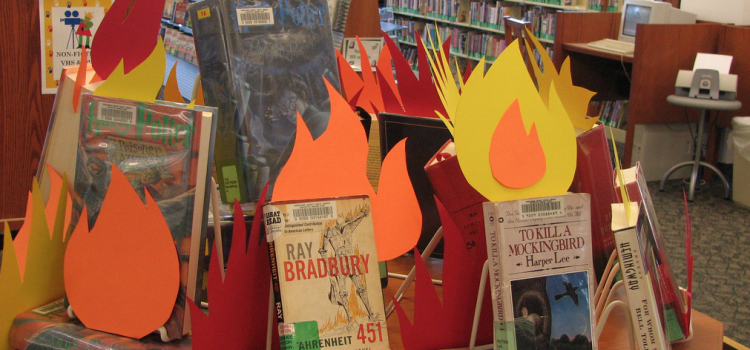I read frequently challenged books. Not by coincidence, but deliberately and purposefully. Why? I believe in intellectual freedom and therefore I actively form my own opinions about literature.
The American Library Association lists the 100 most frequently challenged books from the last decade as well as providing detailed information on the last thirteen years including a top ten for each year with the reasons why each text was challenged.
Some of the most influential books in my life appear on the frequently challenged lists above. These books not only led me to my vocation teaching literature to teenagers, but taught me about humanity and American history and culture. As a teacher, I did not shy away from controversial, heavy topics. I provided my students the education my teachers provided for me. Just as Mr Howland opened my eyes to the pivotal importance of Mayella Ewell and Mrs Byrnes highlighted Huck Finn’s growth when he decides to “go to hell” for Jim, I aim to guide my students through engaging books and help them use the evidence in the texts to form their own opinions of the texts themselves, of our past, and, hopefully, of their own values.
Most of the challenges on the ALA list are to protect children and teens. Yet, sometimes, a book is challenged for a small portion of the content, such as one word on the first page of Newbery Award Winner The Higher Power of Lucky or one illustration the size of a thumbnail in Where’s Waldo? But more often, a challenged book reflects the ugly side of humanity. What is the purpose of literature if not to hold a mirror up to ourselves? To acknowledge the inherent ugly and dark spots and to contrast it with the light.
I often hear a cry for “wholesome” literature for students. However, its quite difficult to find wholesome texts for teens that hold up to rigorous literary analysis. Many classics books are frequently challenged and can’t be considered wholesome. A sector of the population laments that even upper class men in high school are too young to face literature depicting humanity’s darkness. Yet, in a matter of months, these students will be old enough to vote, serve on juries, and jeopardize their lives for their country. How can our country’s young adults be involved citizens if they have been sheltered from intellectual discussion on the violent horrors of war and rape or the causes and effects of addiction and racism?
Some books truly do not belong around children (such as Fifty Shades of Gray, number 4 on the latest list), but we cannot ban them from society – from bookstores and libraries. Such actions set a precedent. If we allow it now, it can be allowed later with a new skewed set of criteria. What starts as a protection, can become a silencing. Individuals must retain their right to intellectual freedom and choose for themselves, and help their own children choose, what to read.
I choose to read what other’s want to keep from me, my students, and my children. Everything from Its Perfectly Normal and Captain Underpants to The Bluest Eye and Kite Runner. I experience each book in its entirety, rather than sound bites and isolated passages, and I decide for myself whether I find filth or literature. I challenge you to do the same.
Share with me in the comments what frequently challenged book you will read in celebration of intellectual freedom. I will be reading A Bad Boy Can be Good for a Girl by Tanya Lee Stone, which was the sixth most challenged book last year.

